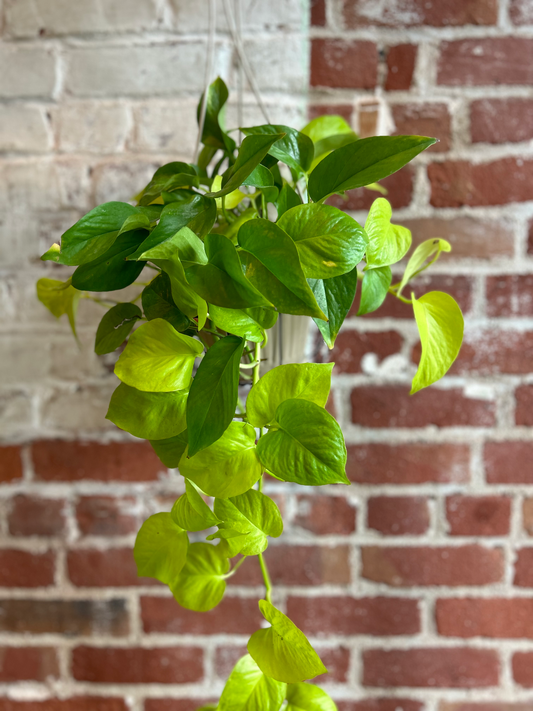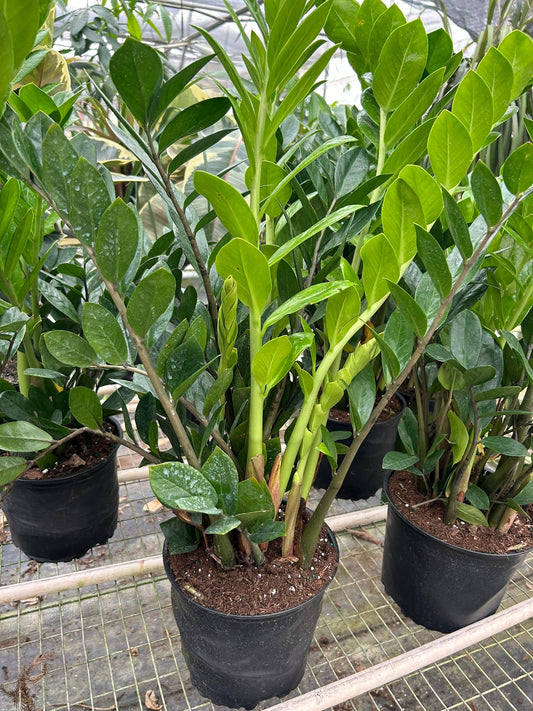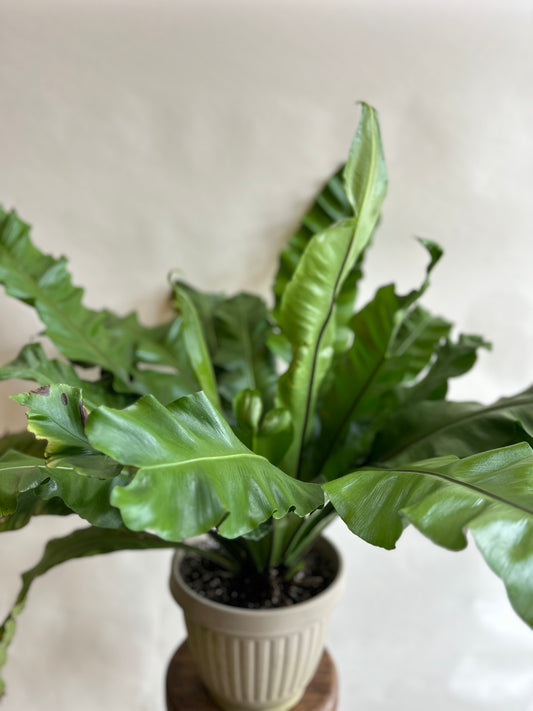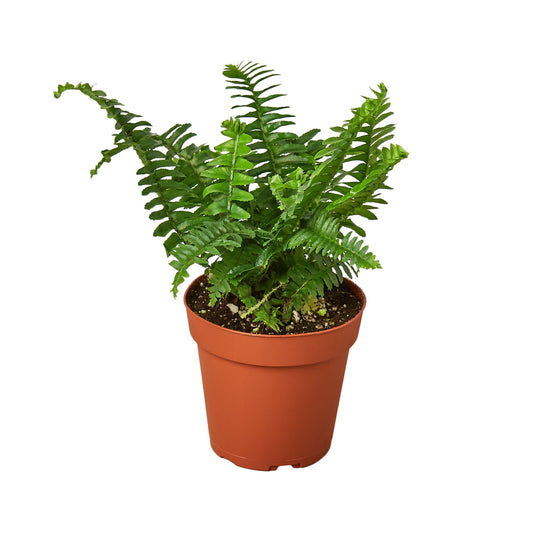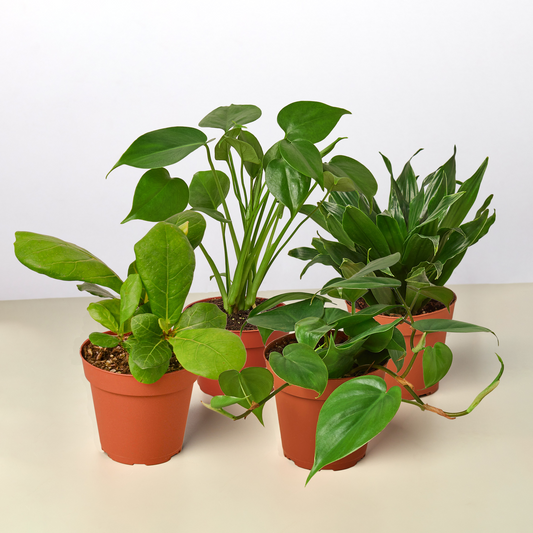How to Grow and Care for African Spears
Cafe Planta Team
Have you ever found yourself captivated by the striking appearance of an African Spear plant? These architectural beauties are not just a feast for the eyes but also a delightful addition to any plant collection. With their tall, cylindrical leaves that seem to defy gravity, African Spears, also known as Sansevieria cylindrica, bring a touch of elegance and a sense of calm to any space.
In this article, we're going to take a closer look at how to grow and care for these fascinating plants. We'll cover everything from choosing the right spot in your home to watering and feeding, and even how to deal with common pests. Whether you're a seasoned plant parent or just getting started, you'll find plenty of practical tips to help your African Spears thrive.
Understanding African Spears
African Spears are native to Angola, where they thrive in arid conditions. They are part of the Sansevieria family, which is known for its hardy nature and air-purifying qualities. One of the most appealing features of African Spears is their unique shape. The leaves grow upright in a spear-like fashion, giving them a modern, sculptural look.
These plants are not just pretty faces, though. They're incredibly resilient and can survive in a variety of conditions. This makes them an excellent choice for anyone looking to add a low-maintenance, yet visually striking, plant to their home. However, while they're tough, they do have some specific needs to truly flourish.
Choosing the Right Spot
When it comes to finding the perfect spot for your African Spear, consider their natural habitat. These plants are used to bright, indirect light. If you can, place them near a window where they'll get plenty of light without being exposed to direct sunlight, which can scorch their leaves.
If you don't have a perfect spot with bright, indirect light, don't worry too much. African Spears are quite adaptable and can tolerate lower light conditions. However, their growth might slow down a bit, and their leaves may not stand as tall and proud as they would with more light.
Keep in mind that African Spears can also do well under artificial light. So if your home doesn't have much natural light, consider getting a grow light to ensure they get enough light to thrive. Also, remember to rotate your plant every few weeks to ensure even growth on all sides.
Potting and Soil Needs
Choosing the right pot and soil is crucial for the health of your African Spear. These plants do best in a well-draining potting mix. You can use a cactus or succulent mix, or make your own by mixing regular potting soil with sand or perlite to improve drainage.
As for the pot, go for one with drainage holes. This helps prevent water from sitting at the bottom, which can lead to root rot—a common issue with African Spears if they're overwatered. When you're repotting, which typically needs to be done every two to three years, choose a pot that's just a bit larger than the current one. They like to be slightly root-bound.
When repotting, gently remove the plant from its pot and shake off any excess soil. Inspect the roots and trim any that appear damaged or rotten. Then, place your African Spear in its new pot, fill with fresh soil, and give it a good drink of water.
Watering Techniques
African Spears are succulents, which means they store water in their leaves. This makes them drought-tolerant, but it also means they don't like to be overwatered. The rule of thumb is to let the soil dry out completely between waterings.
During the growing season (spring and summer), you might find yourself watering every two to three weeks, depending on your home's humidity and temperature. In the winter, when the plant is dormant, you'll need to water less frequently—sometimes as little as once a month.
To check if your plant needs water, stick your finger about an inch into the soil. If it feels dry, it's time to water. When you do water, do so thoroughly until you see water coming out of the drainage holes. This ensures that the entire root system gets a good soak.
Feeding Your African Spear
While African Spears are not heavy feeders, they do benefit from a little boost during the growing season. Use a balanced, water-soluble fertilizer once a month from spring through early autumn. Dilute the fertilizer to half the recommended strength to avoid overfeeding, which can harm the plant.
If you notice the leaves losing their vibrant green color, it might be a sign that your plant needs a bit more nutrition. On the other hand, if the leaves start to brown at the tips, it could be a sign of too much fertilizer. In this case, cut back on feeding and flush the soil with water to remove any excess salts.
Remember, it's always better to under-fertilize than over-fertilize. African Spears are quite self-sufficient and don't need much to thrive.
Dealing with Pests and Diseases
Like any plant, African Spears can occasionally fall victim to pests and diseases. Common pests include spider mites, mealybugs, and scale. If you spot any of these, act quickly to prevent them from spreading to other plants.
A simple solution of water and dish soap can help get rid of these pests. Spray it on the affected areas and wipe the leaves clean. You can also use neem oil, a natural pesticide, for more persistent infestations.
In terms of diseases, the biggest threat to African Spears is root rot, which is caused by overwatering. To prevent this, ensure your plant is in well-draining soil and that you're not watering too frequently. If you notice the base of the plant becoming mushy, it's time to cut back on watering and let the soil dry out.
Pruning and Propagation
Pruning your African Spear is not usually necessary, but you can remove any dead or damaged leaves to keep the plant looking its best. Use a clean pair of scissors or pruning shears to make a clean cut at the base of the leaf.
If you're looking to propagate your African Spear, you're in luck! These plants are relatively easy to propagate through division. When repotting, gently separate the plant into smaller sections, making sure each section has roots attached. Plant each section in its own pot and care for it as you would a mature plant.
Another method is to propagate from leaf cuttings. Cut a leaf into sections about 2-3 inches long, let them dry out for a day or two, and then plant them in a well-draining soil mix. Keep the soil lightly moist until new growth appears.
Incorporating African Spears into Your Home Decor
African Spears are not just plants; they're a statement piece. Their striking form makes them perfect for modern and minimalist interiors. Try placing one on a windowsill or a side table where it can stand out.
For a more dramatic effect, consider grouping several African Spears together in different heights. This can create a stunning focal point in a living room or entryway. Pair them with sleek, modern pots to enhance their sculptural quality.
Remember, the key is to let the plant's natural beauty shine. Avoid overcrowding them with other plants or decorations, as this can detract from their unique shape.
Living with African Spears: Final Tips
As you welcome African Spears into your home, remember that these plants, like all living things, have their unique quirks and needs. Be patient as you get to know your plant and its preferences.
Keep an eye on its growth and adjust your care routine as needed. If you notice it looking a bit droopy, check its light and water situation. If it's thriving, keep doing what you're doing.
And most importantly, enjoy the process. Growing and caring for plants is not just about the end result; it's about the journey and the joy of watching something grow and thrive under your care.
Final Thoughts
In summary, African Spears are a wonderful addition to any home, offering both beauty and resilience. With the right care, they can thrive and bring a touch of nature into your living space.
At Cafe Planta, we're here to support you on your plant journey. Whether you're looking for new plants, care accessories, or simply have a question, we're just a email away. Follow us on Instagram for inspiration and tips. Let's connect and grow together!


